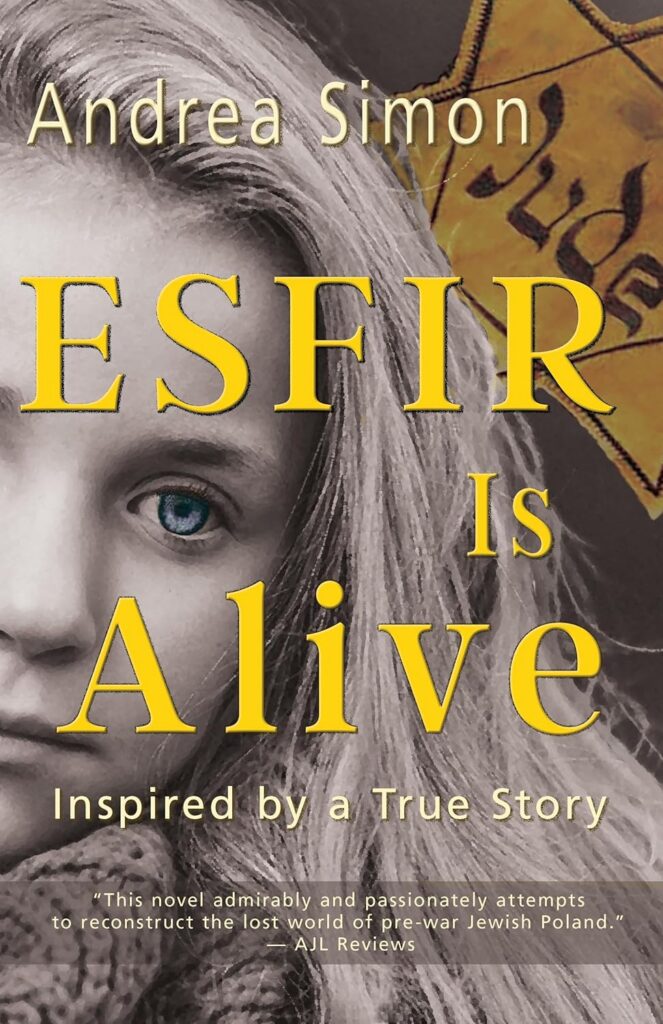Esfir Is Alive
Esfir Manevich, a pre-teen child, lives in Kobrin (then in Poland, now Belarus) in 1936. When she is bullied in school for being Jewish, her parents send her to live with her aunt Perl in Brest. She makes friends with her fellow boarders, but finds that being in Brest doesn’t mean escaping harassment. Esfir learns about the Bundists, Zionists, and various political movements among the Jews. She makes a friend of a Polish Catholic girl when Esfir attends a Christian school for a time. Her family is happy when they receive word that her brother Velvel has successfully emigrated to Palestine, but Esfir’s father’s death from a heart attack foreshadows the coming heartbreak. Pogroms and violence begin to grow, and eventually the family is stripped of belongings and forced into a ghetto. In 1942, they are herded at dog and gunpoint onto cattle cars for an unknown destination.
Because of the choice of title, I’m not giving a spoiler by stating that the story was inspired by an account of one of the few survivors of the Brona Gora executions. Told in the first person, the majority of the book takes place before the family is forced into the ghetto, and vivid details give an absorbing picture of Jewish life in Polish towns in the late ´30s. Some of the minor characters were drawn from the author’s own family. Esfir is under 10 years old when the book opens, but young readers attracted by a story about a girl of similar age might need help grasping the numerous historical details. A Yiddish glossary and other supplements are provided. The story didn’t leave me with as strong an emotional impact as some other Holocaust novels, but I was glad to learn about a facet of the Shoah I knew little about.










